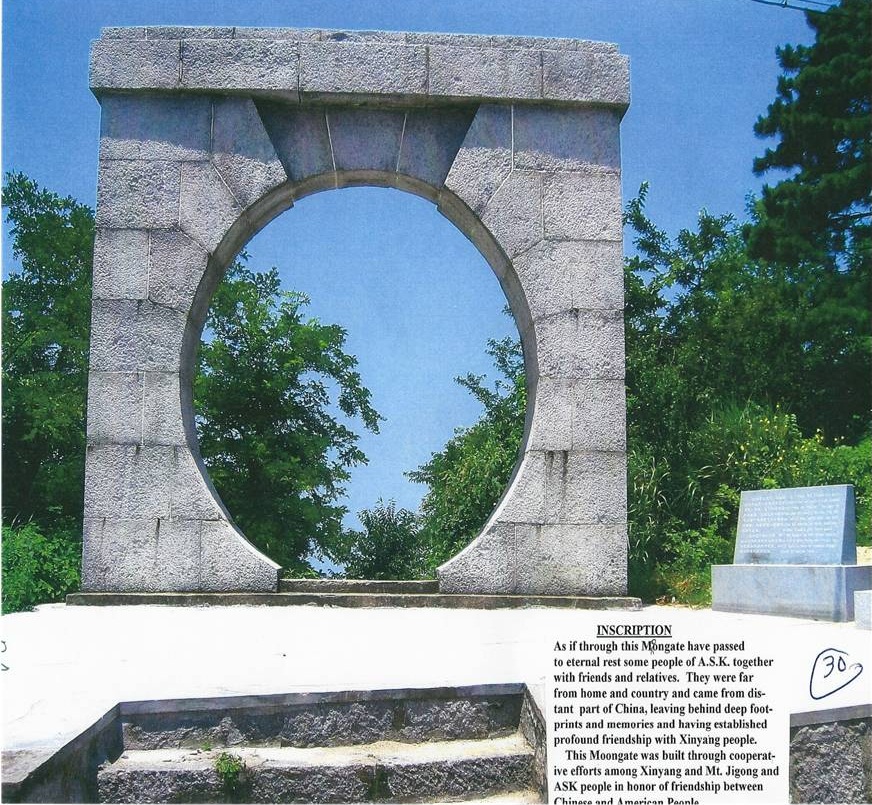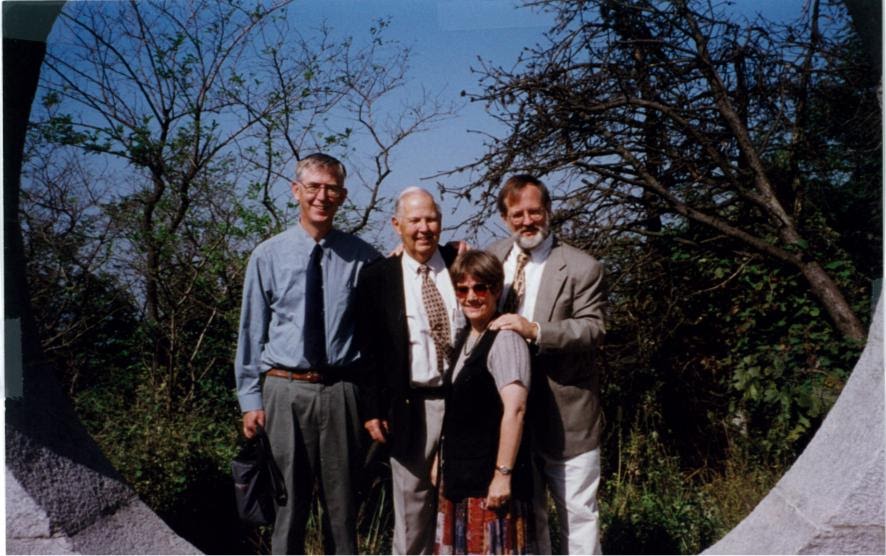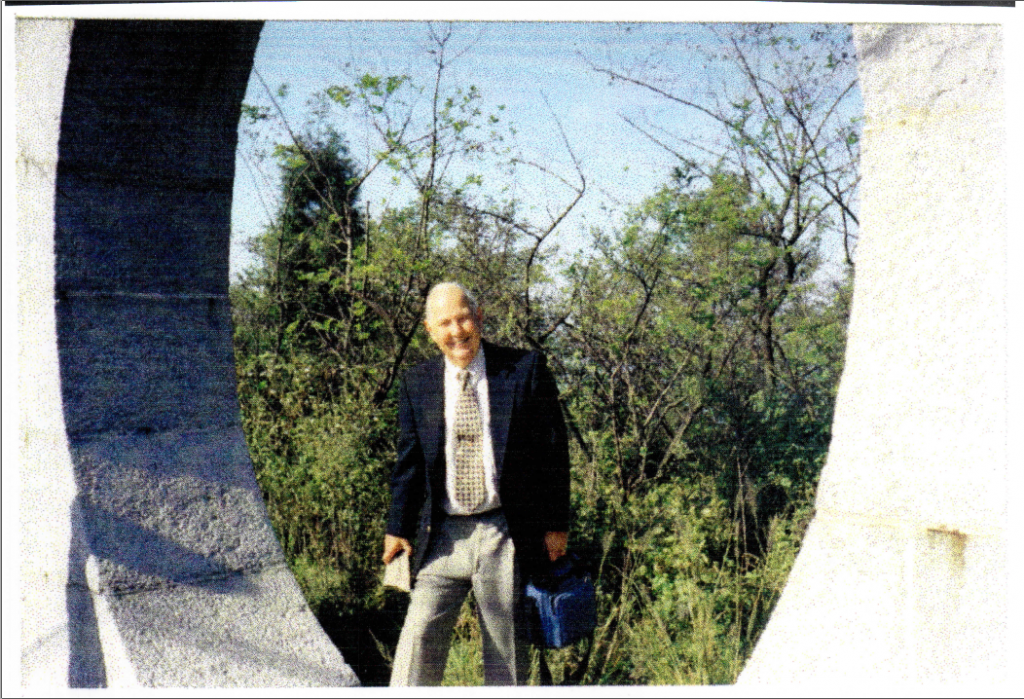Kikungshan Moongate Dedicated
Arthur Nesse ASK ex 1936
The China Connection reported the October 1993 groundbreaking ceremony for a granite Moongate memorial arch on Kikung (now Jigong). The Moongate memorializes Chinese American friendship extending over 100 years on Jigong mountain (‘South Henan province). The Moongate is at the site of a former cemetery where some 30 missionaries and family members were buried from about 1920-1939. Edward Sovik, architect and alumnus of ASK, designed the Moongate.
A group of 22 Americans traveled to Jigong in September 1998 to dedicate the authentically Chinese and enduring solid granite structure on Jigong mountain at the Henan-Hubei border. Jigong is near Xinyang, a city some 150 miles north of Wuhan on the Beijing-Wuhan railway.
Of the 22 visitors, 8 were graduated from or attended ASK and 2 were ASK spouses. 10 visitors were “second generation” ASKites, i.e. sons, daughters and spouses. Two were visitors who came because of friendship with ASK people.
The Chinese participation involved the Xinyang prefecture Bureau of Religious Affairs and the principal address was made by Mr. Yanxiu Liu, the vice director of the Xinyang (Henan) prefecture. He outlined the long record of close association and friendship between the people of Xinyang and Jigong and the missionaries and others from many parts of China that had summered in Jigong. The American School Kikungshan (ASK) and the contributions to China made try American missionaries, some buried in the cemetery adjoining the Moongate, were noted as fittingly memorialized by the Moongate structure.
A Christian-oriented dedicatory service prepared by my niece, the Reverend Janice Nesse of Seattle, Washington was conducted by the American group. Reverend Nesse conducted the groundbreaking ceremony in 1993 but was unable to travel to China for the dedication.
Of special note for those of us in the “first generation” group was the insights the the trip gave to the half of the group that represented “second generation”. The beauty of mountain scenes (particularly the Moongate site), the gracious friendliness of the Chinese people throughout and the feeling of “relatedness” between America and China needed no prompting to be felt. In addition, perhaps some of the “peculiarities” we China-sourced Americans still exhibit to those younger might become better understood or even appreciated, as a result of traveling together to where we grew up.
In addition to the dedication occasion, the China trip featured visits to the many locations in China where ASK operated over the years as it moved to avoid war and revolution in the 1920s, 1930s and 1940s. These cities, in addition to Jigong and Xinyang in Henan province included Shekow and Hankow (Wuhan) in Hubei province. Some days on Lushan (Kuling) brought back ASK’s fondly-remembered association with the Kuling American School on that beautiful mountain resort during several years in the early 1930s. The final ASK years were lived out in Hong Kong from 1948-1952.
Rolf Nesse, Art Nesse, Margaret & Randy Nesse


